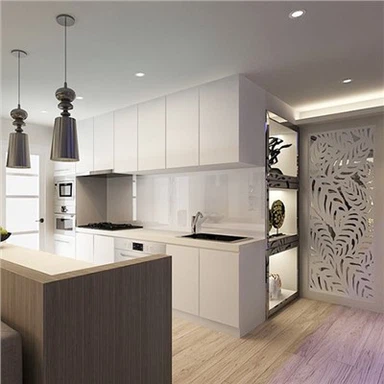What Is The Installation Process For Wholesale PVC ECO Fences?
Mar 03, 2025
he installation process for wholesale PVC ECO fences typically involves the following steps:
1. Planning and Preparation
Determine the Fence Layout: Decide on the line where the fence will be installed. Measure the perimeter and mark the fence posts' locations with stakes or spray paint.
Obtain Permits: Check with local authorities to determine if you need any permits or if there are any zoning restrictions.
Gather Tools and Materials: Make sure you have all the necessary tools, such as a post hole digger, level, tape measure, shovel, screwdriver, saw (if needed for cutting), and concrete mix (if required). Ensure you have the right amount of PVC fencing panels, posts, caps, and other necessary components.
2. Prepare the Fence Post Holes
Mark the Post Locations: Measure and mark the locations for your posts, ensuring they are spaced evenly (usually 6-8 feet apart depending on the fence style).
Dig Post Holes: Use a post hole digger to dig the holes for the posts. The holes should be deep enough to accommodate 1/3 of the length of the post and wide enough for the post to sit securely.
A typical depth is 2 to 3 feet, depending on the height of the fence and local climate conditions (e.g., frost lines).
Check for Utility Lines: Before digging, ensure there are no underground utility lines. Contact local utility companies if necessary.
3. Install the Fence Posts
Insert Posts into Holes: Place each PVC fence post into the hole. Ensure they are level and plumb.
Secure Posts: You can either set the posts in concrete or compact the soil around them to hold them in place. Concrete is usually recommended for added stability, especially in areas with high winds or soft soil.
Let Concrete Set: If using concrete, follow the manufacturer's instructions, allowing time for the concrete to cure, typically 24-48 hours.
4. Attach the Fence Panels or Rails
Insert the Panels: Depending on the style of your PVC ECO fence, you may either insert individual panels into the posts or attach horizontal rails to the posts first.
For panel-style fences, align the bottom of the panel with the post slots or brackets.
For rail-style fences, place the rails horizontally into the posts and secure them with screws or brackets.
Ensure Even Placement: Use a level to ensure the panels are straight and evenly spaced.
5. Install the Fence Caps
Attach the Top Caps: PVC fence posts typically have decorative caps to cover the top. Once the panels or rails are securely attached, slide or snap the caps onto the tops of the posts.
6. Final Adjustments and Checks
Check Alignment and Stability: Ensure that the entire fence is straight, level, and stable. Tighten any screws or fasteners that may need adjustments.
Trim Excess Panel or Post Length: If necessary, trim any excess PVC material with a saw for a clean, neat finish.
7. Maintenance Tips
Clean Regularly: PVC ECO fences are low-maintenance, but cleaning them with a garden hose or mild soap can help maintain their appearance.
Inspect for Damage: Occasionally check for loose fasteners, cracks, or wear, and replace any damaged parts promptly.
Notes:
Weather Conditions: It's recommended to install the fence during dry weather to ensure that the concrete sets properly and that the materials are not compromised.
Manufacturer's Instructions: Always refer to the manufacturer's guidelines for specific instructions on installing your PVC ECO fence, as the installation steps may vary slightly depending on the product.
By following these steps, you can successfully install a durable, low-maintenance PVC ECO fence.






